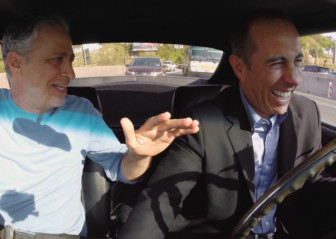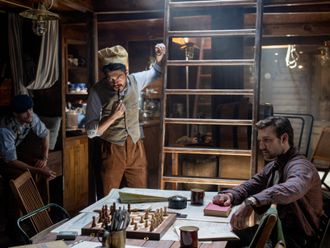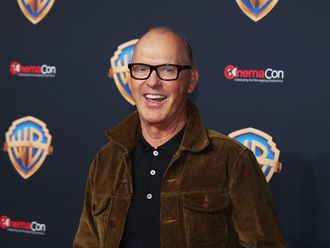
Jerry Seinfeld could have taken his gazillion-dollar Seinfeld fortune, gone merrily on his way and never worked again, but he decided two years ago to launch the web series Comedians in Cars Getting Coffee on Sony’s Crackle.com.
The show is exactly what it sounds like: Seinfeld in conversation with his funniest celebrity friends, including David Letterman, Tina Fey, Mel Brooks, Louis C.K., Jon Stewart, Aziz Ansari and Sarah Silverman, among others. The series, which is in its fourth season this summer, has collected more than 40 million views and an Emmy nomination.
How has it done so well? Obviously having the name “Seinfeld” attached doesn’t hurt. But the best explanation is that it’s a talk show without actually being a talk show.
If that sounds like Seinfeld-ian nonsense, well, that’s what it is. Following tradition, Comedians in Cars Getting Coffee is basically a show about nothing — except cars and coffee, sort of. Every Thursday at noon, a new episode (generally about 15 to 20 minutes long) is posted, each kicking off with Seinfeld asking a famous pal to join him for a cup of joe.
Then they take a ride in a classic car to a coffee shop and talk about everything from comedy to careers to kids to hobbies. It’s essentially eavesdropping as stars chat, so you learn all kinds of fun facts. For example: Jon Stewart has a three-legged dog. Tina Fey doesn’t have a driver’s licence. Every night, Mel Brooks goes to Carl Reiner’s house where the two comedy legends eat dinner on TV trays and watch Jeopardy!
Transition to TV
As it’s always an entertaining peek behind the scenes, the question becomes “When is Seinfeld going to take the show to television?” At this point, we know the drill: First comes the web show, and if it’s really good, it’s picked up by a network for true stardom. Even in a world where Netflix reigns, we’re still ingrained to think of television as the ultimate platform.
Seinfeld’s answer, however, has always been the same: Never. And that’s probably for the best. Everyone knows that talk shows can have a rough time in the television world. Daytime and late-night TV are littered with failed ventures (Bethenny, The Arsenio Hall Show, Totally Biased, Katie, to name a few) for many reasons. Network interference. Hosts and producers having different visions. The scramble to fill an episode every day or week.
Plus, Seinfeld isn’t a fan of modern-day talk shows, calling them “promotional vehicles for the industry.”
“They’re not talk shows, per se, they’re kind of setup talk shows — ‘I’m gonna ask you this, then you say that’,” he told the Hollywood Reporter. “The shows are pretty cheap, too, so until it becomes an unworkable business model, I don’t think you’ll see change.”
Network executives could promise to stay out of Seinfeld’s way, but the internet still has much more freedom than broadcast or cable television could offer. With the web show, there’s no pressure about when an episode needs to run, or for how long. No one gives notes. There are no pre-interviews. Seinfeld can do whatever he wants, however he wants, and the result is a genuinely fascinating conversation.
The most important point, though, involves the comedians themselves. In front of a studio audience, they don’t open up the way they do in the relaxed atmosphere of Seinfeld’s low-key production. That, in a nutshell, is why Comedians in Cars Getting Coffee works. And, as Seinfeld has learned through the years, you don’t mess with success.












